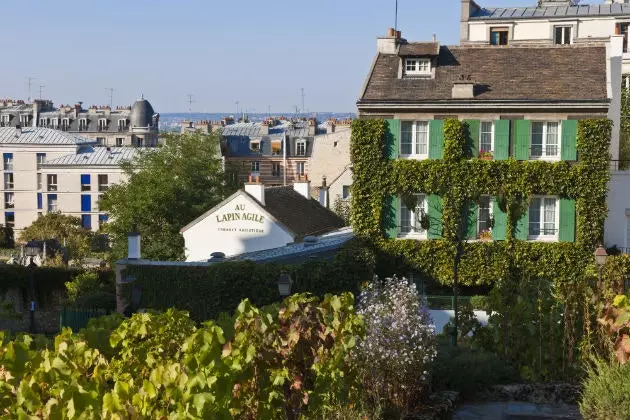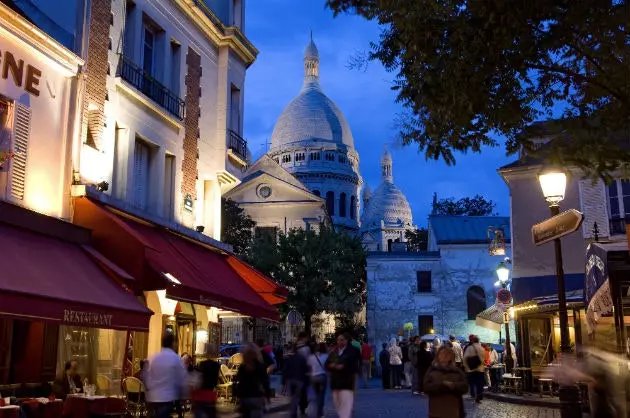
The vineyards of Montmartre
Did you come from Paris? Republic of Montmartre? No, we are not going crazy: the Republic of Montmartre exists and, like every government, it has its president, its ministers, its deputies, its consuls and its plenary sessions, where the proper course of its operation is decided.
The idea may seem strange. And maybe it is. But what is certain is that it is not a marketing invention (it would not need it: the neighborhood is the second most visited destination in the most visited city in the world ), nor the latest anti-system reaction. Its roots lie in the very history of a district that, not so long ago, was just another of the Seine communes, far removed from the Paris of the grand boulevards.
Let's change the souvenir shops, the brightly colored oil paintings and the cafeterias with cats drawn on the entrance, and put in their place farmland, pasture with sheep and fifteen mills (among them the mythical ones, of which only two are still active) . That was Montmartre. The Place du Tertre (where today all the painters congregate) functioned as the main square, the church of Sait Pierre (which would then become the oldest in Paris), was its parish church, and Calvary, its local cemetery.

The second most visited attraction in the most visited city in the world
When in 1840 Paris, a city in full transformation, annexed Montmartre, all that was not erased with a stroke of the pen: the ashes of its fiery independent spirit were still burning. So much so that In 1920, at the initiative of its neighbors, the first elections to the Commune of Montmartre were held. , which were presented by coalitions as surprising as the Cubist Party (with Picasso himself as the head of the list), the Dadaists of Tristan Tzara or Breton, and the anti-scratchers, of Jules Depaquit, who would finally win victory and become in the first president of the republic of Montmartre.
Since then, more than 90 years later, little has changed here: the uniform of its members remains the same, the one worn by the Aristide Bruant drawn by Tulousse Lautrec: black hat, red scarf and cape; his anthem, the one created by the popular composer and poet Lucien; Y his motto: do good with joy.
Among his first measures was the creation of the Soupe Populaire (the popular dining room) and the Foire aux Croûtes (the Fair of Mamarrachos), and in the team of co-founders Francisque Poulbot, a well-known cartoonist who would give his name to a figure of the poulbot, who accompanies a group of underprivileged children in a kind of charanga, which runs through the streets of the neighborhood twice a week. Still today.
Another of the curious initiatives was, precisely, the Montmartre vineyard plantation, a tiny orchard between rue des Saules and rue Saint-Vincent , to save the land from urban speculation in the 1930s. About 1,000 bottles are produced annually in the district town hall itself, and every second weekend in October the wine is presented at the traditional harvest festival. Its profits go to social and cultural works in the neighborhood. Limited, Parisian, and with history. That is why a glass of ** Le Clos de Montmartre , deserves to be pedaled carefully and tasted, almost with worship**. And make a toast to your health: Long live the Republic!

a tiny orchard
*** You may also be interested in...**
- 100 things about Paris you should know
- The Paris of Edith Piaf
- Keys to make the perfect Parisian picnic
- How to become a real Parisian 'bobo'
- The gastrohipster route of Paris
- Paris Guide
- Everything you should know about Paris
